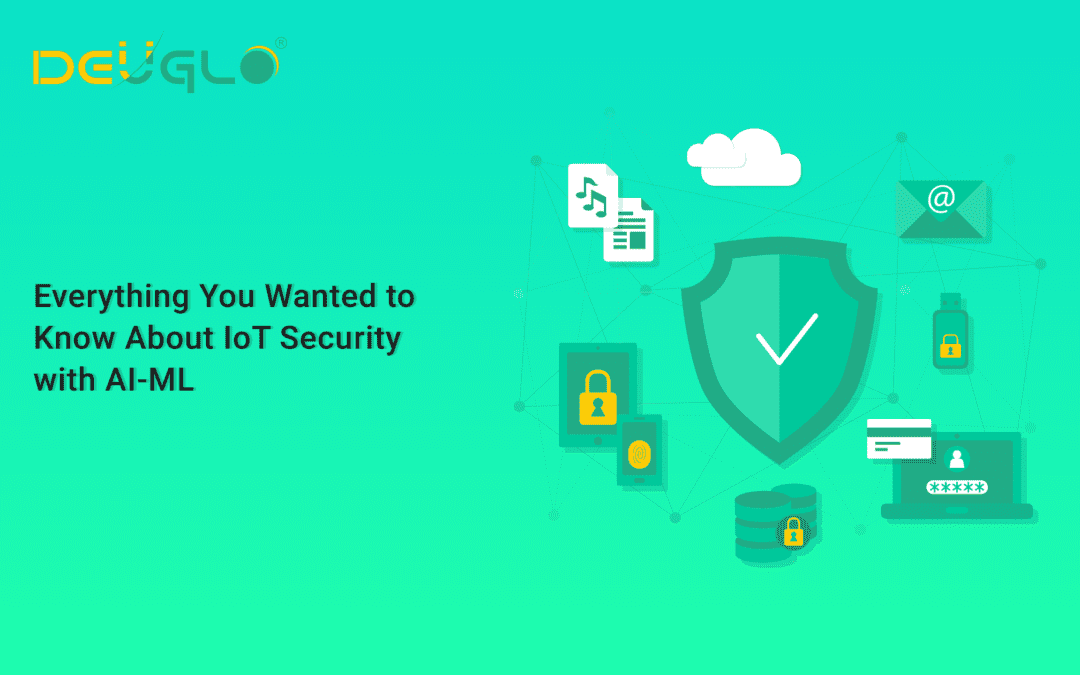Everything You Wanted to Know About IoT Security with AI-ML
Technology is fast-growing, and enterprises around the world are finding it tough to keep pace with the developments. Most importantly, the advance of technology has led to an increase in cyberattacks across small, medium, and large enterprises across the world.
The rapid advancement in the technology scene can be considered a boon with the incorporation of AI/ML-based security systems. While on the other hand, the increasing demand for IoT (Internet of Things) has caused an enormous concern for cybersecurity as hackers and adversaries are starting to find exploitable vulnerabilities to get access to the system.
How AI/ML can help with IoT Security?
While traditional security system largely relies on signature-based pattern matching technology or rules-based protection, any presence of malware or a cyber threat can be there only if the signature exists in the virus database.
With the advent of AI/ML, security experts managed to develop an alternative security system to the traditional cybersecurity solutions. What seemed impossible for conventional security solutions can be quite easy to detect with these advanced security solutions.
IoT is, by far, considered to be the next best thing in technology, and every day, we are hearing news about new start-ups and applications getting released, which depend on IoT. According to reports, 31 billion IoT devices will get installed in 2020, and the number could even rise to 35 billion by the end of 2021.
IoT finds use in various sectors, including connected homes, connected cars, smart wearables, transportation, oil & gas, healthcare, smart cities, etc. But, this sudden rise in IoT also presents a lot of challenges in terms of scalability, security, and maintainability.
Among the most significant advantages of using IoT devices is that these devices don’t require human intervention to function. The sensors present in these devices will help in detecting, collecting, storing, and analyzing the information which is collected.
But this also presents a significant risk as it comes with its own set of vulnerabilities allowing cybercriminals to gain access to every bit of data collected.
Take, for example, a smart home application installed in a home. A smart home means that most of the electronic devices in the house, along with the air conditioning and lighting systems, can be controlled from a laptop or a mobile phone from anywhere in the world.
So, in a smart home system, everything is designed for the user’s convenience. Hence, if the garage door senses a car approaching, then automatically it switches on the air conditioning, deactivates the alarm, etc. On a typical day, any user will see that as a very comfortable feature.
There is another intrusive aspect of this scenario. By getting access to the garage door opener, a cybercriminal or a hacker could quickly get access to every other system connected to the IoT network.
Final Words
We might face a lot of issues when it comes to implementing AL and ML based security solutions. As far as the output is up to the mark, no one will complain. But only when there is an issue, then there will be questions raised as to who will hold responsibility for action being taken autonomously by a software. Yes, there are ethical and legal issues to solve.
When looking at the magnanimity of the problem and shortage of talented security professionals, there cannot be a better solution to combat cyber security threats than AI and ML based solutions. It is the number of benefits these solutions offer is far higher than the number of issues these might cause.
Please contact us now at [email protected] for any queries or developments needed in the field of IoT Security.

